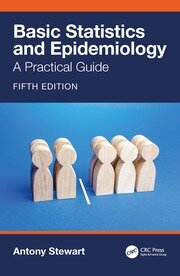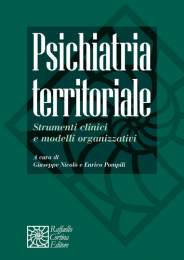Non ci sono recensioni
DA SCONTARE
This straightforward primer in basic statistics and epidemiology emphasises their practical use in healthcare and public health, providing understanding of essential topics such as study design, data analysis and statistical methods used in the execution of medical research. Assuming no prior knowledge, the clarity of the text and care of presentation ensure those new to, or challenged by, these topics are given a thorough introduction without being overwhelmed by unnecessary detail.
Key features:
- Provides an excellent grounding in the basics of both statistics and epidemiology
- Full step-by-step guidance on performing statistical calculations
- Numerous examples and exercises with detailed answers to help readers navigate these complex subjects with ease and confidence
- Enables students and practitioners to make sense of the many research studies that underpin evidence-based practice
- Fully revised and updated for this fifth edition, now with additional exercises and question and answers online for self-testing
An understanding and appreciation of statistics is central to ensuring that professional practice is based on the best available evidence, in order to best treat and help the wider community. Reading this book will help students, researchers, doctors, nurses, and health managers to understand and apply the tools of statistics and epidemiology to their own practice.
1. What Are Statistics? 2. Populations and Samples. 3. Random Sampling. 4. Presenting Data. 5. Frequencies, Percentages, Proportions and Rates. 6. Types of Data. 7. Mean, Median and Mode. 8. Centiles. 9. Standard Deviation. 10. Standard Error. 11. Normal Distribution. 12. Confidence Intervals. 13. Probability. 14. Hypothesis Tests and P-Values. 15. The t-Tests. 16.Data Checking. 17. Parametric and Non-Parametric Tests. 18. Correlation and Linear Regression. 19. Analysis of Variance and Some Other Types of Regression. 20. Chi-Squared Test. 21. Statistical Power and Sample Size. 22. Effect Size. 23. What Is Epidemiology? 24. Bias and Confounding. 25. Measuring Disease Frequency. 26. Measuring Association in Epidemiology. 27. Cross-sectional studies. 28. Questionnaires. 29. Cohort Studies. 30. Case–Control Studies. 31. Randomised Controlled Trials. 32. Screening. 33.Evidence-Based Healthcare. Glossary of Terms. Appendix 1-Statistical Tables. Appendix 2-Exercises. Appendix 3-Answers to Exercises. References. Index.




